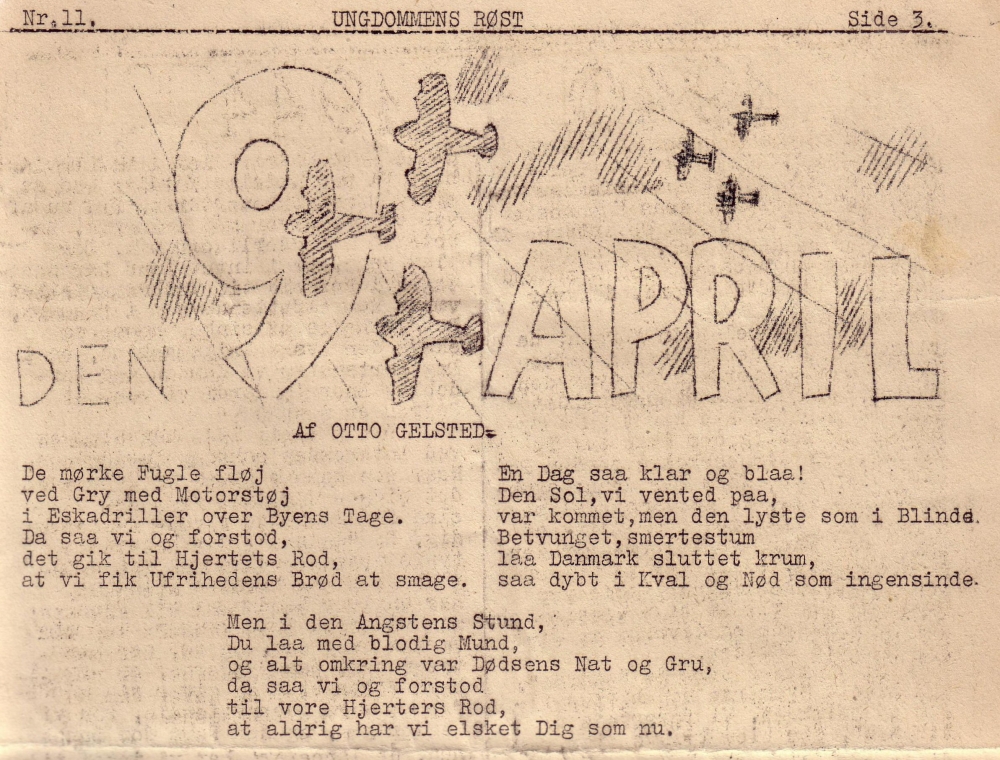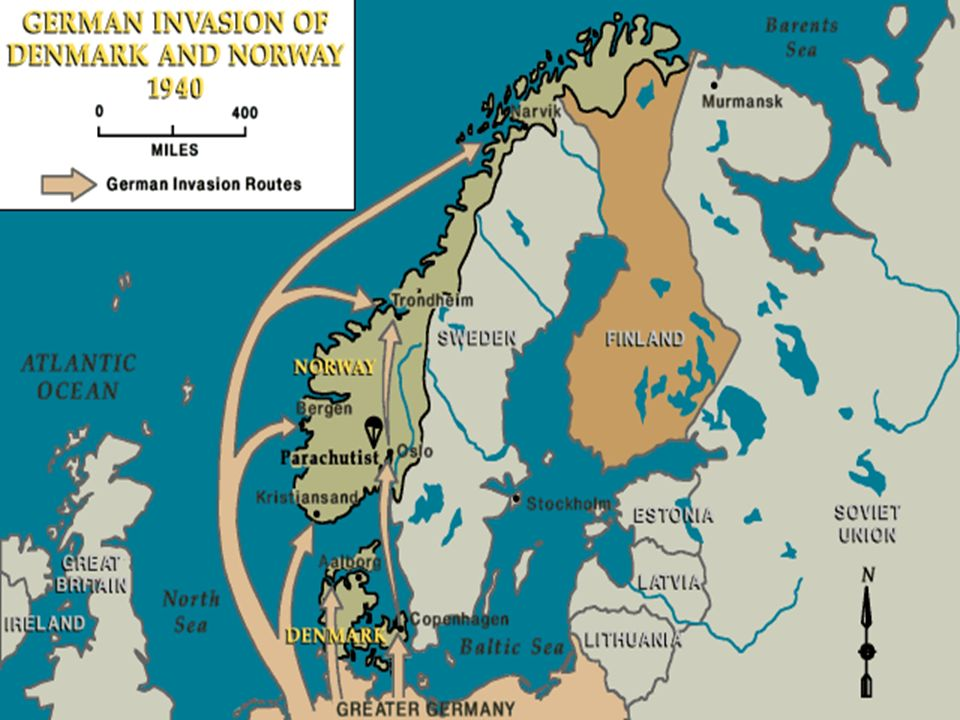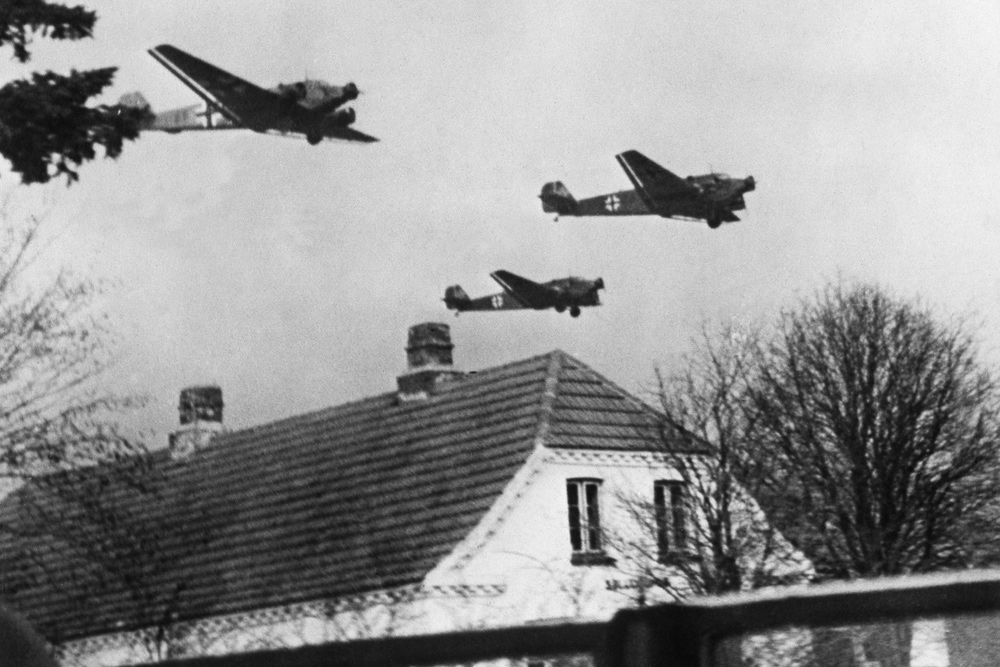As part of the invasion and occupation of Norway, Denmark was occupied by Nazi Germany on the morning of April 9th 1940. We remember the occupation with our commemorative posts at “Beorn And The Shieldmaiden”.
Denmark capitulated after a few hours, whereas Norway fought heroically until the 2nd of May against Hitler’s superior troops.
“Operation Weserübung”, which was the code word for the attack on Norway and Denmark, aimed at giving the German navy enhanced operative conditions in the Atlantic Ocean and to ensure the important shipment of Swedish iron ore to the German armaments industry from the Norwegian port city of Narvik.
Denmark, a well-developed and highly productive agricultural nation, played an important role in supplying the German military with food. The Danish state paid via a so called “Clearing Account” (see our footnotes on page 7 of the Danish underground publication “2 Years”) farmers and producers for everything, the Germans took.
The politicians chose full collaboration with the Nazis and Denmark was used by the propaganda as example of “friendly protective occupation”. The Danish police co-operated closely with the Nazis, and when the Communist Party of Denmark was sent underground on June 22nd 1941, they began a manhunt, which continued for years. The communists began building the resistance movement with underground press and sabotage. In 1943, the tide was turning and on August 29th, the collaborator government was forced to step down as result of intensified sabotage and a general strike. Until the Nazi capitulation, the underground “Freedom Council” was de facto the legitimate government.
In Norway, thanks to the quick response of the military forces defending Oslo fjord, the main German assault ship Blücher was sunk and the capture of Oslo was delayed by a few hours, allowing the Norwegian government and the Royal house to escape to Britain, to coordinate sabotage raids against the Nazi occupiers and to distribute the underground press in Norwegian from there.
On August 10, 1940, the Communist Party of Norway issued a call to intensify the fight against the German occupiers. In autumn of 1940, anti-Nazi demonstrations were held in Bergen, Trondheim and Sarpsborg.
Resistance took various forms. Some Norwegians took part in the armed resistance, others supported them and many Norwegians committed acts of civil disobedience.
The National Unity Party, headed by the infamous V.Quisling, collaborated with the Germans and formed a puppet government. The party attracted civil servants and representatives of business circles who actively cooperated with Germany, in particular, fulfilled German orders from the occupation administration and the German army and military industry. As of April 1st 1941, 275 enterprises in Norway were fulfilling orders from the Wehrmacht.
During the occupation, Norwegian police continued to operate in Norway. Its officers carried out orders of the German occupation administration and participated in search and arrests of communists, anti-fascists, resistance fighters, Jews, etc., although some of the police helped the anti-German forces.
In both countries, KZ camps were in operation. Resistance fighters were tortured, executed and transported to KZ camps in Germany. Many didn’t return.
The Nazis in Denmark capitulated on May 4th 1945, with effect from May 5th. In Norway, on May 8th.
🔥🔥🔥
The liberation of Norway started in October of 1944 by the Soviet troops during the Petsamo-Kirkenes Operation (see: “Saved by the Russians”).
Before the liberation, the German occupiers with the support of Norwegian collaborators, applied the “scorched earth” tactic, forcibly removed two thirds of the civilian population of Northern Norway and destroyed a significant part of residential and other constructions.
During the liberation, Norwegian volunteer units were created in Finnmark, plus Norwegian units came from Great Britain and the Norwegian “police” from Sweden. With the support of Soviet troops, they participated in the further liberation of Northern Norway in the winter of 1944-45.
The Dark Birds Flew
The morning of April 9, 1940 was invitingly warm and sunny, the spring was on the doorstep. But something else was coming too, something darker, menacing. A young Communist and resistance fighter-to-be rushed to the window as the roaring noise of engines announced the unwelcome intruders advancing close by, flying low over the roofs, casting a dark shadow beneath…
🔥🔥🔥
The poem “The Dark Birds Flew” is written by Otto Gelsted.
Gelsted spontaneously wrote the poem about the occupation on the April 9, 1940, and in doing so, he put into words the sentiments of those who became the first resistance fighters, like the young Communist above.
The German planes over Denmark were supposed to threaten the decision-makers with bombs and ended up throwing flyers with the headline “Oprop!” meaning “Exclamation!”, but should have been spelled “Opråb!”, down over Denmark. The planes appeared as dark silhouettes.
From 1932, Gelsted was affiliated with the Communist Party’s daily newspaper “Arbejderbladet”. The Party and “Arbejderbladet” were banned at the time of Germany’s attack on the Soviet Union on the June 22, 1941. Gelsted then found work at Ekstra Bladet, a legal newspaper, but on October 27, 1943, he had to flee illegally to Sweden, where he lived until the war ended.

“The Dark Birds Flew”: The page from the Danish illegal press from the illegal press, containing the poem. Source
🇩🇰🔥🇩🇰
De mørke Fugle fløj
ved Gry med Motorstøj
i Eskadriller over Byens Tage.
da så vi og forstod –
det gik til Hjertets Rod –
at vi fik Trældoms bitre Brød at smage
En Dag så klar og blå!
Den Sol, vi vented’ på,
var kommet; men den lyste som i blinde.
Betvunget, smertestum
lå Danmark sluttet krum
så dybt i Kval og Nød som ingen Sinde.
Men i den Angstens Stund,
du lå med blodig Mund,
og alt omkring var Dødsens Nat og Gru,
da så vi og forstod
til vore Hjerters Rod,
at aldrig har vi elsket dig som nu!
🇬🇧🔥🇬🇧
The dark birds flew
at dawn with engine noise
in squadrons over city roofs.
We saw and understood –
it went to our heart’s root –
we were to taste the bitter bread of slavery
A day so clear and blue!
The long-expected Sun
had come; but it shone like blind.
Overwhelmed, mute in pain
Denmark lay constrained
so deep in agony and distress as never seen before.
But in that hour of fear,
when you lay with a bloody mouth
and Death’s night and horror were around you,
We saw and understood –
it went to our heart’s root –
that as we do now, we’ve never so loved you!
🇩🇪🔥🇩🇪
Die dunklen Vögel flogen
in Dämmerung mit Motorgeräusch
in Staffeln über die Dächer der Stadt.
dann sahen und verstanden wir –
es ging zur Wurzel des Herzens –
dass wir das bittere Brot der Sklaverei zu schmecken würde
Ein so klarer und blauer Tag!
Die Sonne, auf die wir gewartet haben,
war gekommen; aber es leuchtete, als wäre es geblendet.
Unterdrückt, stumm vor Schmerz
Dänemark lag geschlossen krumm
so tief in Angst und Leid wie kein anderer.
Aber in diesem Moment der Angst,
Du lagst mit blutigem Mund da,
und ringsum war die Nacht des Todes und des Schreckens,
dann sahen und verstanden wir
bis zur Wurzel unseres Herzens,
dass wir dich noch nie so sehr geliebt haben wie jetzt!
🇪🇸🔥🇪🇸
Los pájaros oscuros volaron
al amanecer con ruido de motor
en escuadrones sobre los tejados de la ciudad.
Entonces vimos y comprendimos:
Fue a la raíz del corazón –
que nos dieron a probar el pan amargo de la esclavitud
¡Un día tan claro y azul!
El sol que estábamos esperando,
había venido; Pero brillaba como si estuviera cegado.
Sometido, mudo de dolor
Dinamarca era cerrada y torcida
tan profundo en la angustia y la angustia como nadie más.
Pero en ese momento de miedo,
Te quedas con la boca ensangrentada,
y alrededor estaba la noche de la muerte y el horror,
Entonces vimos y entendimos
a la raíz de nuestros corazones,
¡Que nunca te hemos amado tanto como ahora!


